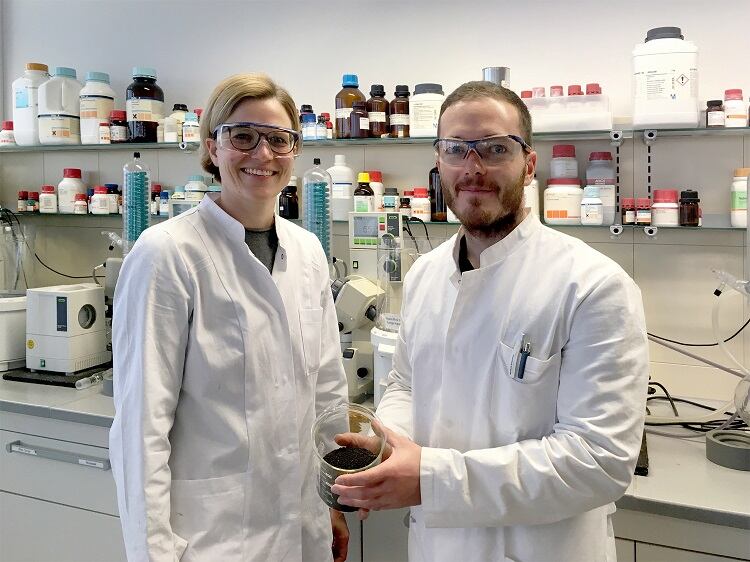Rapeseed (Brassica napus) is abundantly grown in Europe, China, India, Canada and Australia. The crop is cultivated for use as animal feed, biodiesel, and for human consumption as an edible vegetable oil.
While best known for its oil content, which has a high-quality lipid acid composition, rapeseed also contains high-quality proteins comprised of essential amino acids. These are found in rapeseed meal – the by-product of the extraction of oil from rapeseed.
However, protein extracts in rapeseed have an intense, unpalatable bitter taste, which has deterred industry from employing the by-product in foods for human consumption.
So what makes rapeseed bitter?
According to the researchers at Germany’s Technical university of Munich (TUM), rapeseed includes very bitter-tasting secondary plant constitutes.
In a recent study, the scientists identified three isolates in rapeseed meal: an extract of all the proteins contained in rapeseed meal, an isolate containing predominantly cruciferin, and a third containing napin. The isolates were found to have a protein content of 80-90%.

Using mass spectrometric analysis methods and taste tests, the researchers identified the key substance responsible for the unpalatable bitterness as the compound kaempferol 3-O-(2‘‘‘-O-sinapoyl-ß-sophoroside).
The cruciferin isolate contained as much as 390 mg of kaempferol per kg. Both the rapeseed meal and napin isolate tasted bitter in the sensory test, despite continaing less than a tenth of the quantity of kaempferol.
An opportunity for industry
Due to rapeseed's high-protein content, the by-product has long been used by farmers as a protein feed for livestock.
While yet to be developed into a mainstream food ingredient for humans, this latest development represents an opportunity for agricultural and food processing industries, according to TUM.
With the origin of the bitter taste now known, TUM spokesperson Andreas Battenberg told FoodNavigator there are two options for industry:
One, “The food processing industry can try to develop an extraction scheme, [to minimise] the kaempferol derivate or try to chemically convert or destroy the bitter component.”
Alternatively, “plant breeding companies could try to watch out for varieties with lower kaempferol content to breed sorts with low or no kaempferol,” he explained.
Looking to the future: food waste, protein, gluten replacements
With demand for food expected to double by 20150, TUM’s research may also help to expand the world’s protein supply.
“If rapeseed protein could be used for human alimentation, it might be another step to close the anticipated protein deficit,” said Battenberg.
“The valorization of rapeseed meal in the food sector is an interesting area of research and would provide new market opportunities. The fact that rapeseed protein was approved and included in the 2017 Union List of Novel Foods, is a clear indication of the interest for such protein as food ingredient.” – Nathalie Lecocq, director general, FEDIOL
Increasing the use of raw materials and side streams – where by-products are repurposed for different uses – will also add value and reduce waste across the food chain.
A UK public-private partnership is currently investigating just that. Yesterday (31 January 2019), Coeliac UK and Innovate UK announced plans to help fund research into new plant proteins for gluten-free bread.
Rapeseed meal is one such protein source being investigated as an ingredient in gluten-free bread, which Nandi Proteins, the Scottish firm leading the project, said improve its taste and texture.
“Essentially, we are taking potentially lower cost by-products that currently are not efficiently used, and making a high value ingredient from them that solves the coeliac problem but equally helps reduce food waste as part of the process,” Nandi chairman Neil Crabb told FoodNavigator.
The plant proteins could also conform to a manufacturer’s clean label by reducing the need for E number additives in their products, he continued.
Source: Journal of Agricultural and Food Chemistry
‘Kaempferol 3-O-(2'''-O-sinapoyl-ß-sophoroside) causes the undesired bitter taste of canola/rapeseed protein isolates’
Published online ahead of print, December 2018, DOI: http://dx.doi.org/10.1021/acs.jafc.8b06260
Authors: C. Hald, C. Dawid, R. Tressel, T. Hofmann


